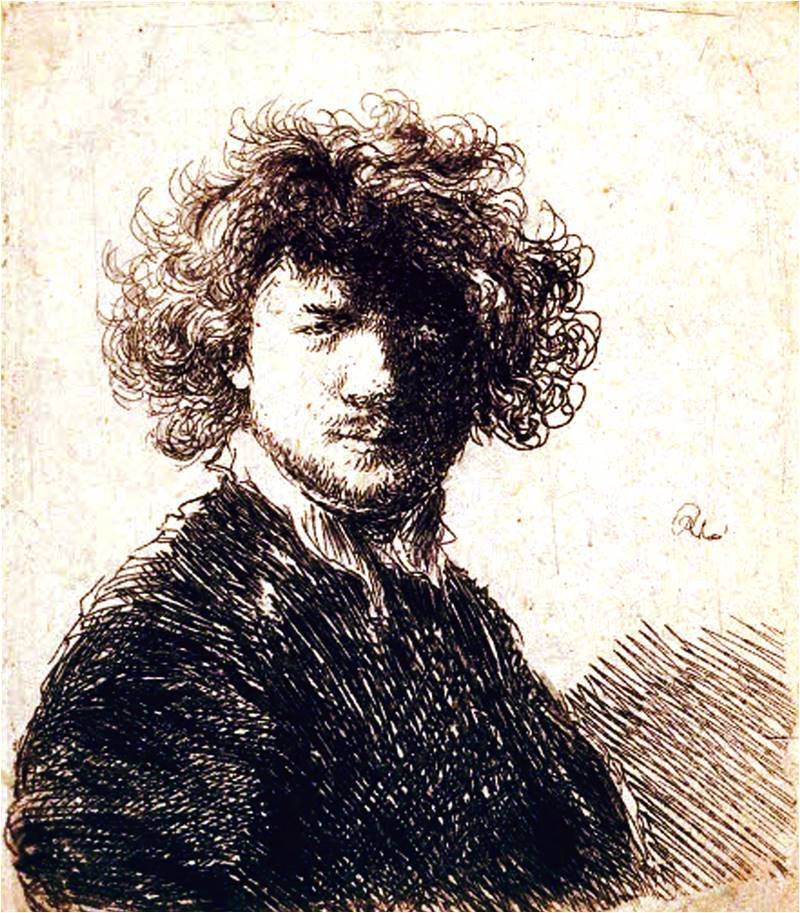
2019 marks the 350th anniversary of Rembrandt’s death. During his life, Dutch artist Rembrandt van Rijn was a prolific and innovative master painter, printmaker and draughtsman.
This self-portrait shows the young artist with curly hair and white collar: bust; facing right, turned to front; second state with smooth plate edges. Its etching has been retouched with brush and grey ink.
The British Museum has one of the greatest collections of Rembrandt’s works on paper.
Unlike most Dutch masters of the 17th century, Rembrandt’s works depict a wide range of style and subject matter, from portraits and self-portraits to landscapes, genre scenes, allegorical and historical scenes, and biblical and mythological themes as well as animal studies. His contributions to art came in a period of great wealth and cultural achievement that historians call the Dutch Golden Age, when Dutch art (especially Dutch painting), although in many ways antithetical to the Baroque style that dominated Europe, was extremely prolific and innovative and gave rise to important new genres. Like many artists of the Dutch Golden Age, such as Jan Vermeer of Delft, Rembrandt was also an avid art collector and dealer.
This self-portrait shows the young artist with curly hair and white collar: bust; facing right, turned to front; second state with smooth plate edges. Its etching has been retouched with brush and grey ink.
The British Museum has one of the greatest collections of Rembrandt’s works on paper.
Unlike most Dutch masters of the 17th century, Rembrandt’s works depict a wide range of style and subject matter, from portraits and self-portraits to landscapes, genre scenes, allegorical and historical scenes, and biblical and mythological themes as well as animal studies. His contributions to art came in a period of great wealth and cultural achievement that historians call the Dutch Golden Age, when Dutch art (especially Dutch painting), although in many ways antithetical to the Baroque style that dominated Europe, was extremely prolific and innovative and gave rise to important new genres. Like many artists of the Dutch Golden Age, such as Jan Vermeer of Delft, Rembrandt was also an avid art collector and dealer.

